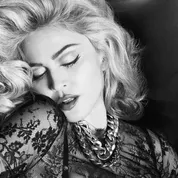
Music and fashion have mirrored each other throughout much of American history, but the cultural impact of the 1990s, in particular, was revolutionary. Not only did it produce the great music and artists that we often discuss here, but the world of fashion was also profoundly influenced by the diverse music scenes that defined the era.
The 90s are notorious for bold experimentation that shifted away from the more formulaic styles of the previous decades. Music and fashion intertwined more dynamically than ever before, with musician's personal styles playing a significant role in shaping trends. Gone were the 80s supermodel trendsetters like Christie Brinkley, replaced by the 90s trend-breakers led by Gwen Stefani.
Every new sound that emerged during the 90s introduced distinct new styles that highlighted the attitude of its listeners. From the laid-back, rebellious flannels of grunge to the bold and expressive outfits of hip hop, the fashion of the 90s was diverse yet unified by an underlying theme of breaking away from mainstream norms.
This era celebrated individuality and diversity, encouraging a mix-and-match approach to fashion that blurred the lines between different musical and cultural backgrounds. As these styles gained prominence, they set trends that are resurfacing in high schools and college campuses today, influencing future generations once again.
90s Hip Hop Fashion
The "Golden Age of Hip Hop" may have been in the 1990s, but the sound took root in the 1980s, as well as the fashion styles that came with it. The 80s hip hop fashion scene, dominated by the likes of Run-D.M.C. and LL Cool J, laid a robust foundation with its bold Adidas tracksuits and Kangol hats. As we transitioned into the 90s, this fashion legacy evolved, embracing a streetwear aesthetic that became synonymous with hip hop culture. The late 80s brought about an influx of baggy silhouettes, vibrant colors, and statement accessories, setting the stage for the more complex and varied styles of the 90s. This decade expanded on the initial crossover of music and fashion, where artists became fashion icons and their styles streetwear staples.
Artists that Influenced 90s Hip Hop Fashion
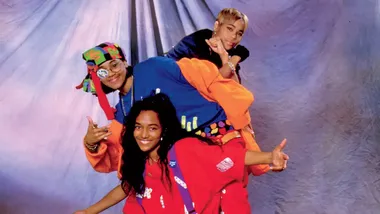
TLC
One of the most iconic groups of the 90s, not only left a mark with their chart-topping hits but also through their distinctive fashion sense that defined a generation. Known for their colorful, baggy outfits that mixed streetwear with luxury, TLC brought a playful yet bold aesthetic to the hip hop scene. Each member flaunted a unique style that reflected their individual personalities, from Left Eye's funky, avant-garde eye patches to Chilli's crop tops and baggy pants, and T-Boz's cool, laid-back vibe with oversized shirts.

Aaliyah
Often referred to as the "Princess of R&B," Aaliyah’s approach to fashion was pivotal in defining 90s women's hip hop style. Her iconic ensemble usually consisted of baggy pants paired with crop tops, oversized jackets, and sunglasses, providing a template for androgynous chic that combined feminine and masculine elements. Aaliyah's style was effortless yet bold, influencing not just music but the fashion industry’s approach to women's streetwear.
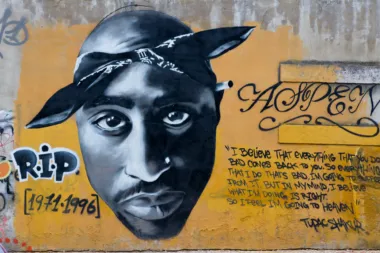
Tupac Shakur
As one of the best Hip Hop artists of the 90s, Tupac wasn't just influential through his introspective lyrics and social commentary, but also through his impactful style. Known for his bandana tied in the front, Shakur adopted a thug-life aesthetic that influenced his fans and followers immensely. His style was a blend of streetwear with elements of chic, such as pairing a bandana and baggy denim with a neatly tucked-in shirt.
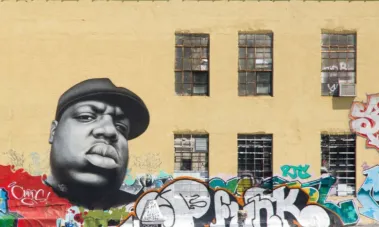
Notorious B.I.G.
Biggie Smalls brought an opulent flair to hip hop fashion, often seen in colorful Coogi sweaters, fitted suits, and Versace sunglasses, which played into his luxurious yet street-smart image. His short career produced multiple top 100 90s Hip Hop songs that often referenced his attire, influencing his audience’s fashion choices and helping to elevate urban fashion to luxury status.

Queen Latifah
As one of the few prominent female rappers during the 90s Golden Age of Hip Hop, Queen Latifah brought a regal and commanding presence to hip hop, both musically and sartorially. Her fashion sense included crowns, African-inspired cloths, and large, bold jewelry that emphasized empowerment and cultural pride. Her style and music promoted a message of self-respect and unity, helping to shape the genre's dialogue around women’s roles in hip hop.
90s Hip Hop Fashion Trends

Baggy Jeans
A defining trend of 90s hip hop fashion, baggy jeans represented more than just a stylistic choice—they were an emblem of rebellion and comfort. Originally influenced by prison garb where belts weren't allowed, these "big pants from the 90s" became synonymous with the freedom and defiance that hip hop music espoused. Both men and women embraced the trend, which often saw jeans worn sagging and paired with oversized shirts.
Bright and Bold Colors
Brands like Cross Colours pioneered the use of vibrant, block colors that stood out against the more subdued tones typically found in mainstream fashion. This trend was not just about standing out but was also a reclaiming of African American cultural aesthetics that celebrated heritage and pride through clothing. These colorful outfits became a uniform for many within the community and were a key part of both 90s mens hip hop fashion and 90s womens hip hop fashion.
Athletic and Luxury Sportswear
The 90s saw the merging of sportswear with luxury fashion, thanks to hip hop’s rising influence. Tracksuits, basketball jerseys, and sneakers became staples both in and out of the sports arena. Brands like Nike and Adidas became integral to 90s hip hop fashion, often featured in music videos and worn by artists at public appearances.
Overalls and Dungarees
These were not just a fashion statement but a nod to workwear that symbolized the working-class roots of many hip hop artists. Dungarees were often styled with one strap undone or completely loose and paired with a crisp undershirt, blending practicality with a touch of nonchalance, embodying the laid-back style of hip hop.
Accessorizing with Heavy Jewelry and Bandanas
Accessories such as oversized gold chains, watches, and rings became symbols of success and affluence within the hip hop community. Bandanas, particularly those tied in the front à la Tupac, became iconic, often colored to signify gang affiliations or simply as a fashion statement. These accessories helped forge a visible link between personal success and community identity.
90s Hip Hop Fashion Brands
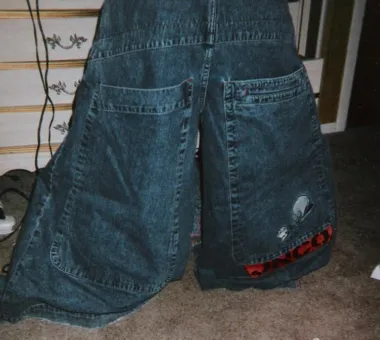
JNCO Jeans
Known for their extremely wide-legged denim jeans, JNCO became synonymous with the skate and hip hop cultures of the 90s. Their distinctive style, featuring oversized pockets and elaborate back pocket logos, captured the rebellious spirit of the youth and became an iconic element of 90s hip hop fashion.
Cross Colours
Founded with the philosophy of "Clothing Without Prejudice," Cross Colours was pivotal in introducing bright, bold color schemes into the mainstream fashion market. Their garments often carried messages of unity and empowerment, resonating deeply with the ethos of hip hop culture.
FUBU (For Us, By Us)
FUBU was a brand that was literally created by and for the African American community, making a significant impact with its urban wear that was both stylish and a statement of cultural pride. It gained tremendous traction through clever marketing and direct associations with hip hop artists who wore and promoted their clothing.
Tommy Hilfiger
Although not exclusively a hip hop brand, Tommy Hilfiger became hugely popular within the hip hop community in the 90s after Snoop Dogg wore a Tommy Hilfiger shirt during an appearance on "Saturday Night Live." The brand’s clean, all-American style mixed with bold, oversized logos fit perfectly with the hip hop fashion aesthetic.
Phat Farm
Founded by Russell Simmons, Phat Farm fused the urban aesthetic with preppy, the Ivy League look, creating an entirely new segment within men's fashion that appealed broadly to both the hip hop community and mainstream consumers.
Baby Phat by Kimora Lee Simmons
An extension of Phat Farm, Baby Phat became a pioneer in 90s womens hip hop fashion, introducing femininity to the urban styles with its sexy, glitzy designs that featured prominently in hip hop music videos and magazines.
90s Grunge Fashion
The transition from the high-octane glamour of 80s metal and glam rock bands to the understated, raw aesthetic of 90s grunge and alternative rock represented a significant shift in rock fashion. The late 80s marked the beginning of this transformation in Seattle, a city whose damp and gloomy climate seemed to mirror the mood of grunge itself. Unlike the tight leather pants and flashy spandex that characterized the 80s, grunge brought with it an affinity for loose flannel shirts, faded jeans, and a generally unkempt appearance that both critiqued and stood in stark contrast to its predecessor’s flamboyance.
Critics and traditionalists initially balked at grunge's disregard for the polished images of earlier rock stars, often dismissing the style as slovenly or unrefined. However, grunge was more than just a fashion statement; it was a powerful form of expression for a generation disillusioned by the excesses of the previous decade. This style emphasized comfort and authenticity over the conspicuous consumption that had dominated the fashion landscape of the 80s.
Artists that Influenced 90s Grunge Fashion
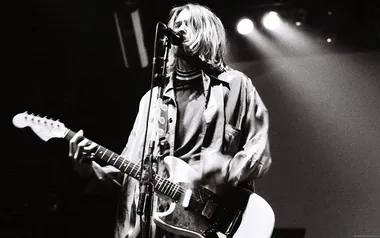
Kurt Cobain
Nirvana not only defined a genre that changed rock, lead frontman Kurt Cobain also became the unwitting herald of the grunge fashion movement with his distinctly disheveled style that screamed "I don't care"—a stark contrast to the polished and extravagant glam rock era that preceded it. Cobain’s fashion was effortlessly cool, characterized by thrift store treasures that included oversized cardigans, striped shirts, and worn-out, light-wash jeans. Nirvana challenged the conventional norms of rock star aesthetics and male fashion. His style was so impactful that it resonated across the fashion world, influencing designers and high fashion to adopt a more relaxed, anti-conformist approach to their collections.
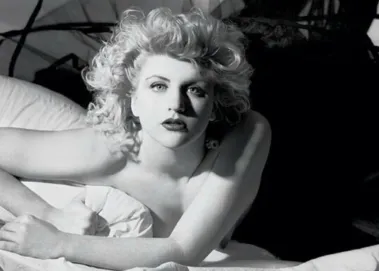
Courtney Love
As the frontwoman of Hole and Cobain's partner, Courtney Love was the queen of the kinderwhore aesthetic—a style that combined childlike and feminine elements like babydoll dresses and Mary Janes with aggressive punk accessories like ripped tights, combat boots, and messy makeup. Love's fashion was provocative, merging vulnerability with a fierce independence.

Eddie Vedder
Eddie Vedder, the lead singer of Pearl Jam, one of the top alternative rock bands of the 90s, had a more subdued approach to grunge fashion was more subdued but equally influential. Vedder typically sported flannel shirts, cutoff shorts, and combat boots—attire that was functional and fuss-free. Vedder's look became emblematic of the grunge movement, representing an authentic connection to the music and the blue-collar roots of many of its fans.

Chris Cornell
Known for his powerful vocals and charismatic presence, Chris Cornell of Soundgarden brought a slightly more polished edge to grunge fashion. His style often included well-fitted jeans, leather jackets, and the occasional rock star essential—sunglasses at night. Cornell’s fashion sense bridged the gap between the grunge scene's rugged, careless style and the more tailored, deliberate look of traditional rock.
90s Grunge Fashion Trends
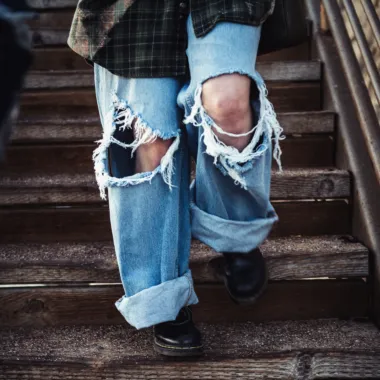
Flannel Shirts
Perhaps no piece of clothing is more representative of grunge than the flannel shirt. Worn oversized and often unbuttoned, it symbolized the grunge ethos of comfort and rebellion against the structured fashions of previous decades.
Ripped Jeans
Celebrating imperfections, ripped jeans were a staple of grunge fashion. They were not just a style but a statement against the pristine, put-together images popular in the media.
Doc Martens and Combat Boots
Footwear was central to grunge fashion, with sturdy boots symbolizing the rugged, anti-fashion statement of the movement. These boots were practical, durable, and became synonymous with the grunge subculture.
Layering and Accessories
Layering was crucial in grunge fashion, often out of necessity due to the cold, wet climate of the Pacific Northwest. Beanies, ripped tights, and thrifted sweaters were all part of the look, accessorized with items like barbed wire bracelets and choker necklaces to add a touch of punk flair.
The grunge aesthetic of the 90s, characterized by its relaxed silhouettes, distressed fabrics, and subdued palette, represented a radical departure from the flashy excess of 80s rock fashion. It was a reflection of the music and attitudes of a generation that rejected the commercialism and artifice of the previous decade, embracing instead a style that prioritized authenticity and comfort.
90s Grunge Fashion Brands
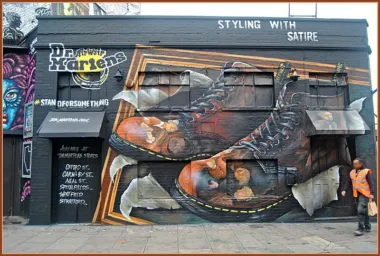
Dr. Martens
Known for their durable, comfortable boots, Dr. Martens became a favorite among grunge musicians and fans alike for their utilitarian yet stylish appeal.
Marc Jacobs
Marc Jacobs introduced grunge to high fashion with his Spring 1993 collection for Perry Ellis, featuring models in silk dresses paired with combat boots, flannel shirts, and beanies. Although controversial at the time, this collection is now viewed as a pivotal moment in fashion history.
Levi’s
The brand's classic jeans were a grunge staple, often worn oversized and distressed for a lived-in look that complemented the casual, low-maintenance vibe of grunge fashion.
90s Punk Fashion
Unlike the 80s, where punk was heavily characterized by its anarchistic and nihilistic themes, the 90s introduced a more eclectic and accessible approach. Bands like No Doubt brought ska punk into the mainstream, incorporating brighter colors and checkerboard patterns that softened punk's traditionally harsh edges. This era of punk was less about creating shock and more about expressing a wide range of personal and political statements through a mix of high-energy music and eclectic fashion.
The Core Punk Elements
90s punk fashion retained visual aesthetics from 80s punk such as studded leather jackets, ripped jeans, and band tees but introduced more color and a mix of fabrics that hadn’t been as prevalent in the previous decade. Plaid patterns, previously a staple, were now often paired with neon colors and accessorized with items like beanies and sneakers, moving away from the heavy boots typical of the 80s. This period also saw the rise of body piercings and tattoos becoming more mainstream as part of personal expression within the punk community.
Influence of Ska Movement
The ska movement of the 90s, with bands like No Doubt leading the charge, infused punk fashion with a more rhythmic and upbeat aesthetic that included Hawaiian shirts, fitted trousers, and suspenders, blending these with traditional punk elements. This crossover not only expanded punk’s appeal but also emphasized its evolving nature as a subculture that was increasingly inclusive of various musical and fashion influences.
This fusion of styles within the punk scene of the 90s demonstrated punk’s adaptability and its enduring appeal, as it continued to evolve and resonate with a new generation of fans who were ready to redefine what punk fashion could be. This was a time of significant experimentation within the subculture, where the boundaries of punk fashion were pushed and expanded in exciting new directions.
Artists that Influenced 90s Punk Fashion

Gwen Stefani of No Doubt
Emerging as a style icon of the 90s punk scene, Gwen Stefani was renowned for her eclectic fashion sense that blended punk vibrancy with ska and pop influences. Her bold choices often included bindis, blue hair, and braces, alongside crop tops paired with baggy pants or punk plaid pants and skirts. Stefani's look was not just about music but a vibrant tapestry of cultural references that made punk more accessible and fashion-forward.

Green Day
As one of the top punk rock bands of the 80s and 90s, Green Day’s fashion fit the genre's rebellious mold, featuring studded belts, dyed hair, and black eyeliner. Their style resonated with the youth, translating punk’s anarchistic messages into wearable forms. The band’s aesthetic contributed significantly to defining punk fashion for a new generation, making it synonymous with both musical rebellion and personal expression.
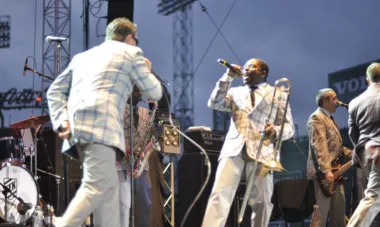
The Mighty Mighty Bosstones
The Mighty Mighty Bosstones were pivotal in shaping the ska punk subgenre within the broader punk scene of the 90s. Known for their energetic performances and distinctive style, they often appeared in matching plaid suits, sharp, often checkerboard patterns that set them apart from the more traditionally dressed punk bands. The band's style influenced many ska bands that followed.
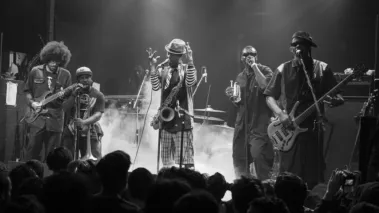
Fishbone
As one of music's unsung heroes, Fishbone stood out for their unique ability to blend punk with ska, funk, and soul, creating a cross-cultural look that bridged decades, genres, and racial divides. And this fusion was also prevalent in their eclectic fashion style, often featured bold colors, mixed prints, and a funky approach to traditional punk attire, reflecting their music's diverse influences. Fishbone's influence was profound, as they not only contributed musically but also pushed the boundaries of what 90s music could look like.
90s Punk Fashion Trends

Ripped Jeans and DIY Customizations
A staple of punk wardrobe, ripped jeans symbolized a rejection of neatly tailored clothes. The DIY ethos was strong, with punks often sewing patches, drawing with permanent markers, or adding studs to their jeans and jackets to personalize their looks.
Plaid Patterns
Plaid became synonymous with 90s punk fashion, often seen in the form of pants, skirts, and kilts. The pattern was a nod to punk's anti-conformity, clashing with more traditional garments to create a visually striking look.
Leather Jackets
No punk ensemble was complete without a leather jacket. Often customized with spikes, patches, and graffiti, these jackets were as much a protective layer as they were a symbol of punk’s rugged ethos.
Doc Martens and Combat Boots
Footwear was crucial in punk fashion, with Doc Martens and combat boots completing the punk look. These sturdy boots were both practical and fashionable, embodying punk’s readiness for action and its streetwise sensibility.
90s Punk Fashion Brands
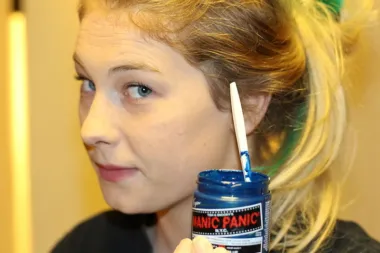
Dr. Martens
A favorite among punks for their durability and comfort, Dr. Martens boots became a punk staple, associated with both the music and the fashion of the scene.
Manic Panic
Initially a boutique, Manic Panic became famous for its vibrant hair dyes, which became essential for anyone wanting to achieve the quintessential punk look with brightly colored hair.
Tripp NYC
Specializing in punk and goth clothing, Tripp NYC outfitted many punks with their plaid trousers, bondage pants, and studded jackets, helping to commercialize and spread punk fashion beyond its subcultural origins.
Is 90s Fashion Coming Back?
There's an undeniable wave of nostalgia washing over the music and fashion world today, as the eclectic and vibrant styles of the 90s make a powerful resurgence. As the 2020s continue on, it's clear that the 90s are not just making a comeback; they are profoundly influencing current fashion trends, providing a rich source of inspiration for a new generation looking to express their individuality and sartorial savvy.
The 90s were a time of significant cultural shift, with fashion serving as a canvas for expression against the backdrop of a rapidly changing world. The decade dismantled more formal fashion paradigms of the 80s and introduced a more relaxed, irreverent style that permeated through various music scenes to everyday streetwear.
Today, as we see the mirror of music and fashion reemerge, it comes with a modern twist—integrating the lessons and aesthetic refinements of the intervening years. High-waisted jeans, crop tops, and sportswear that once dominated the 90s landscape are appearing anew on social media feeds and city streets, styled with contemporary flair. This resurgence is not just about replicating past trends; it's about merging them with the innovation and environmental consciousness of modern fashion to create something that's both nostalgic and forward-thinking.

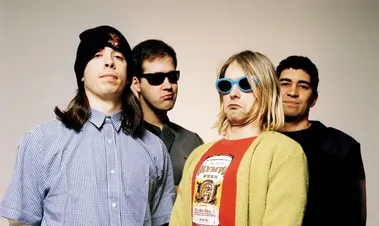
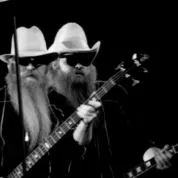
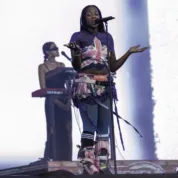
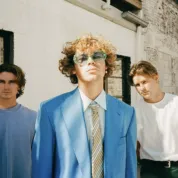
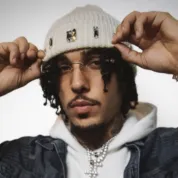
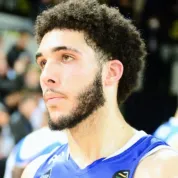
Leave a Reply!